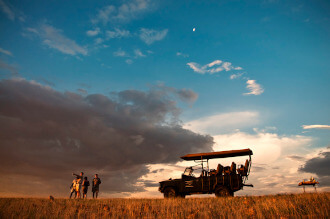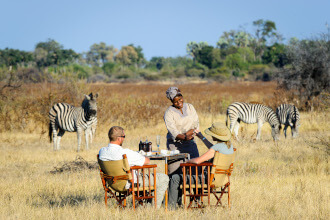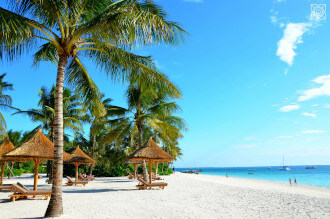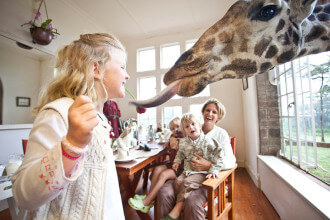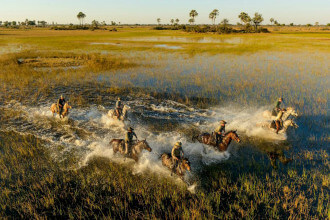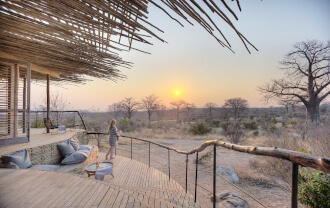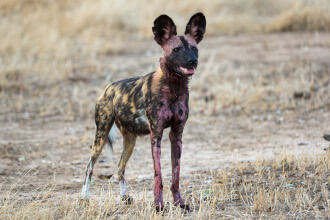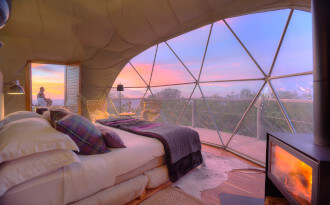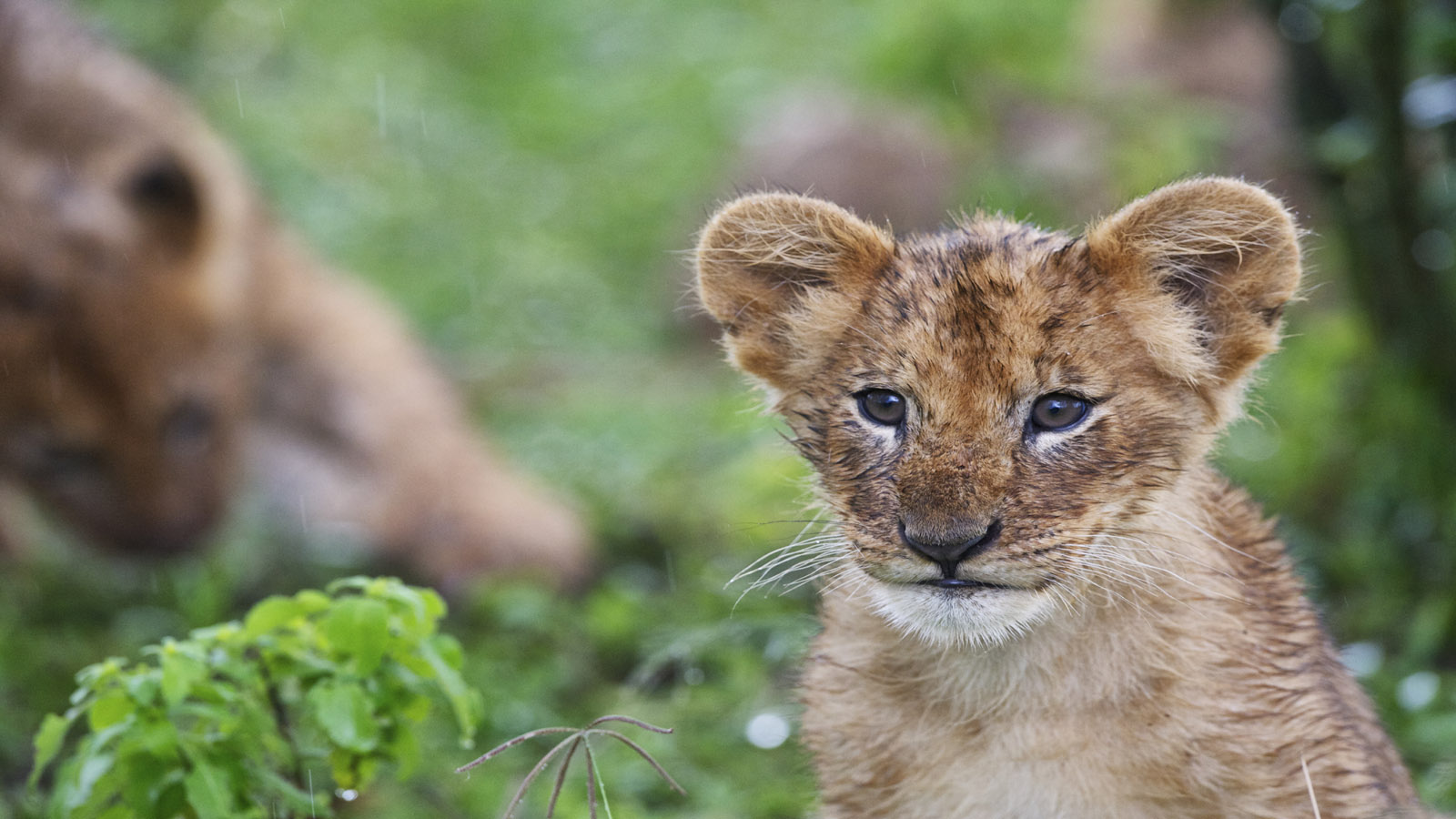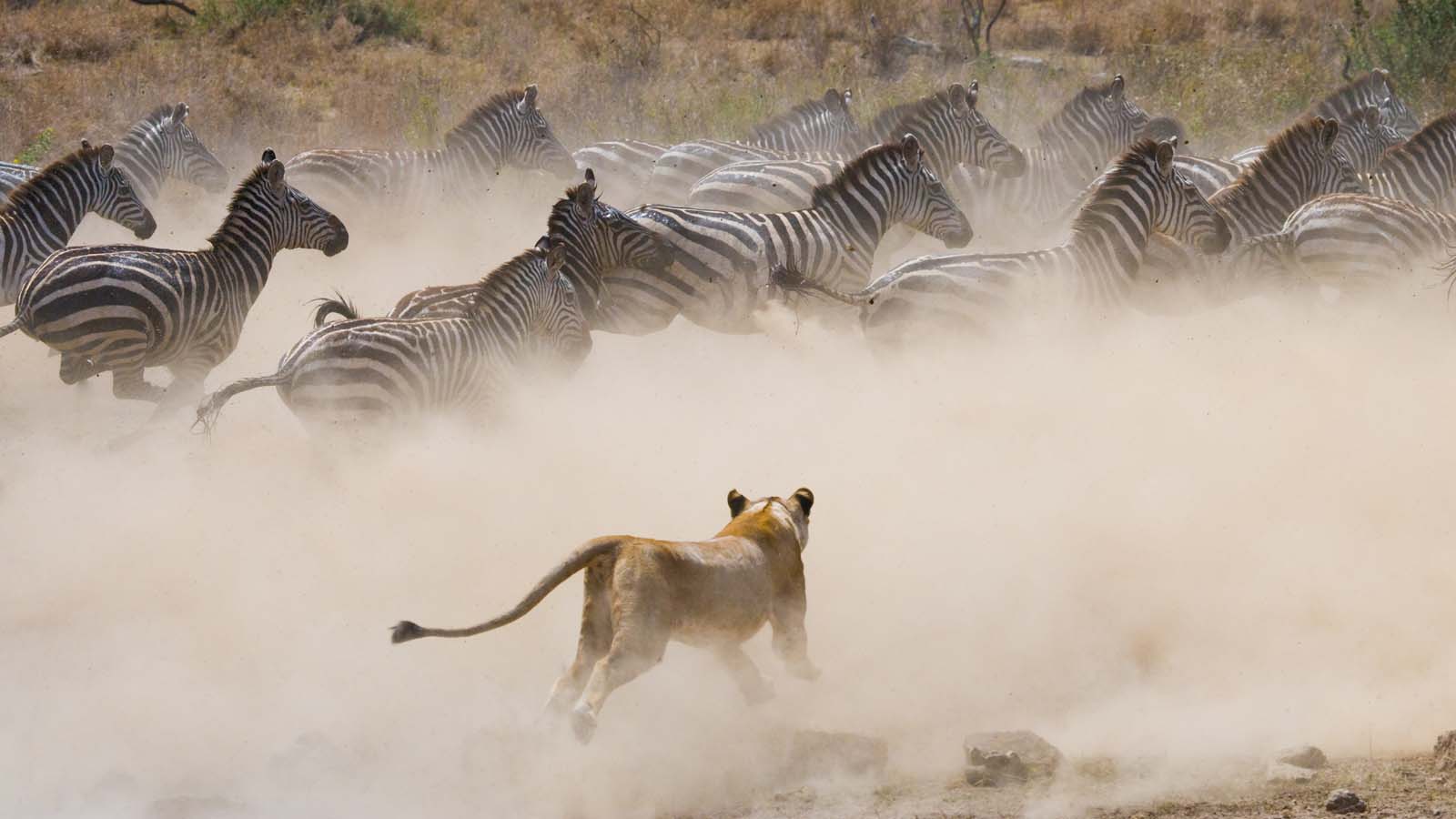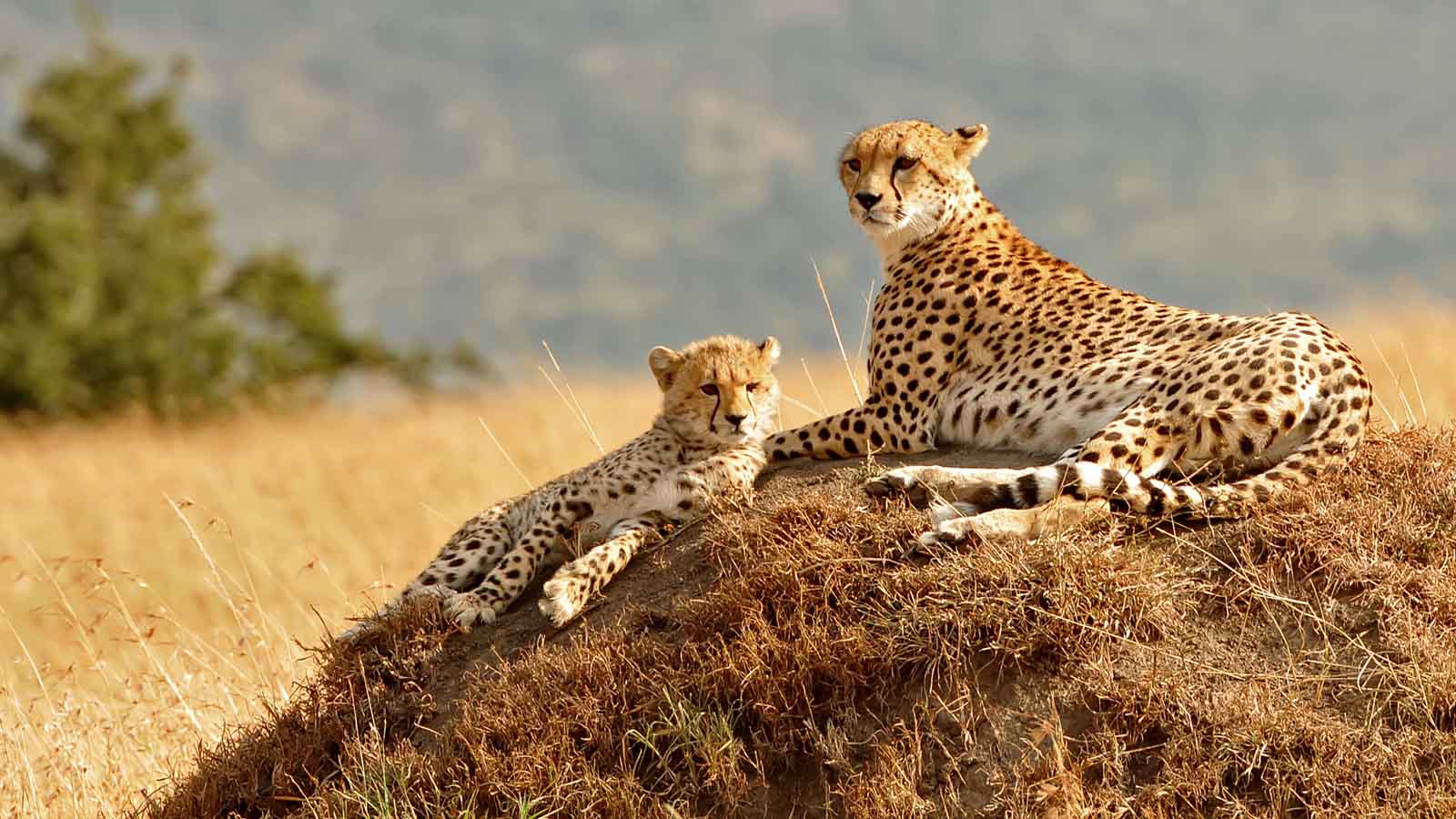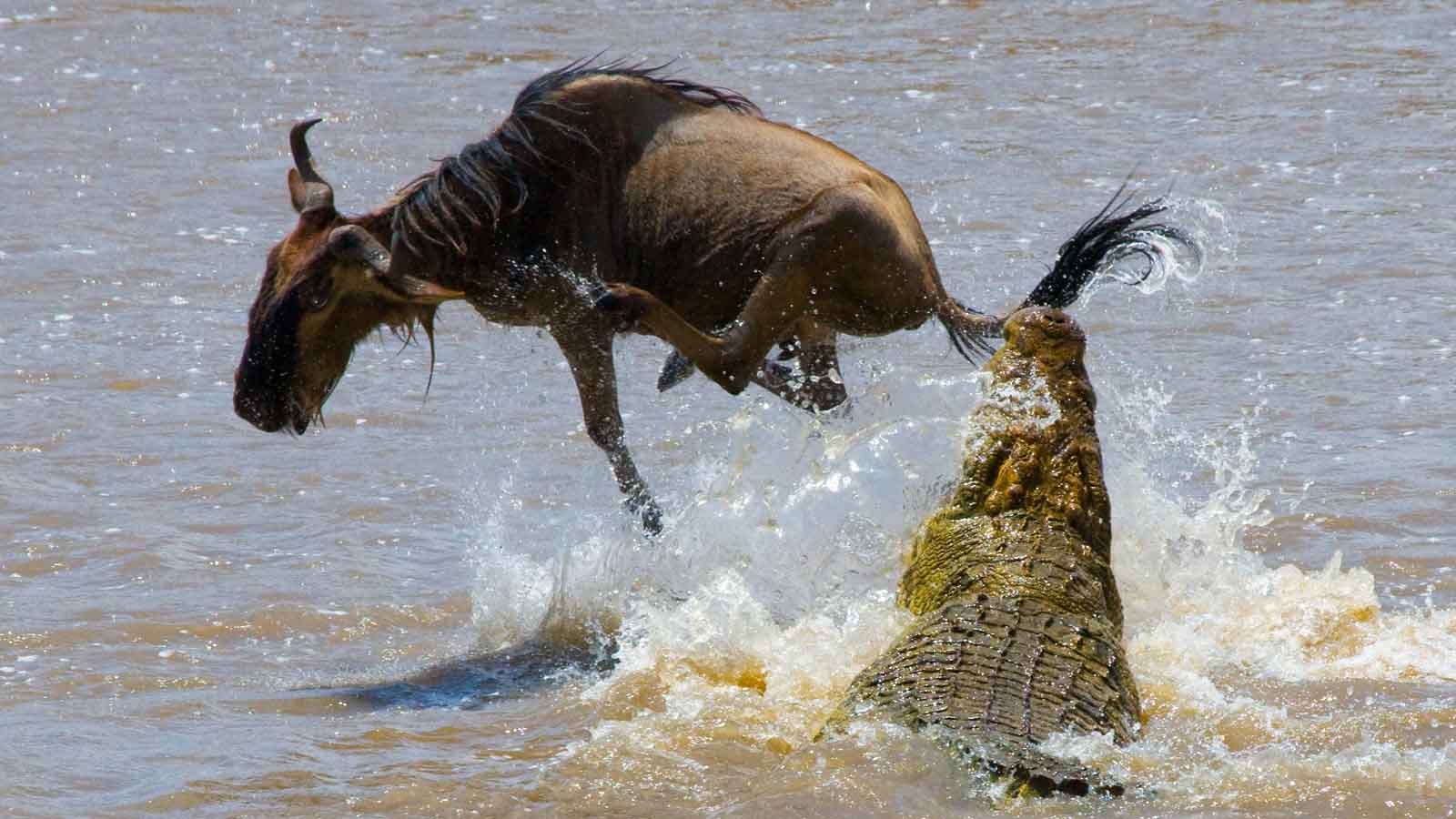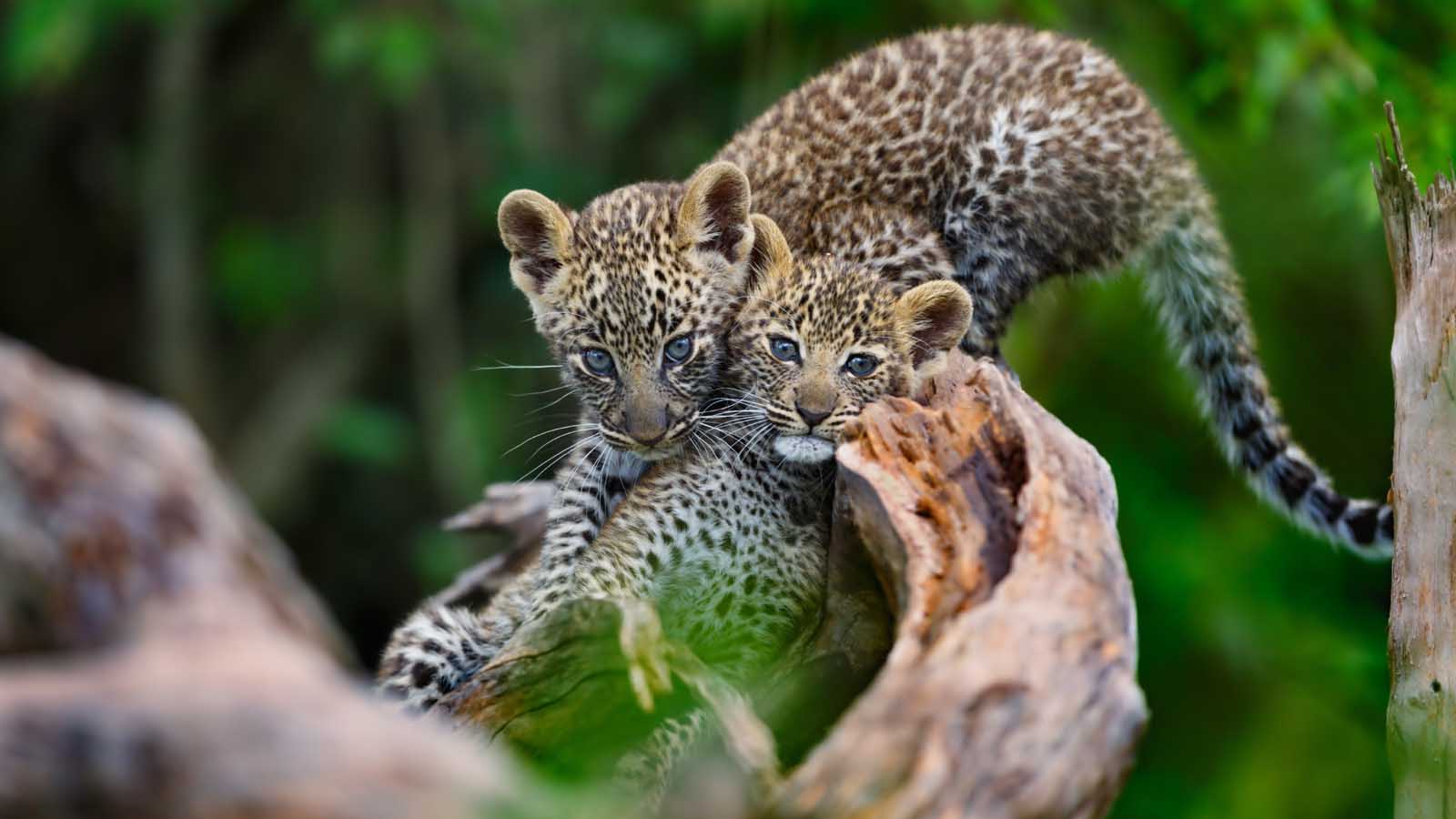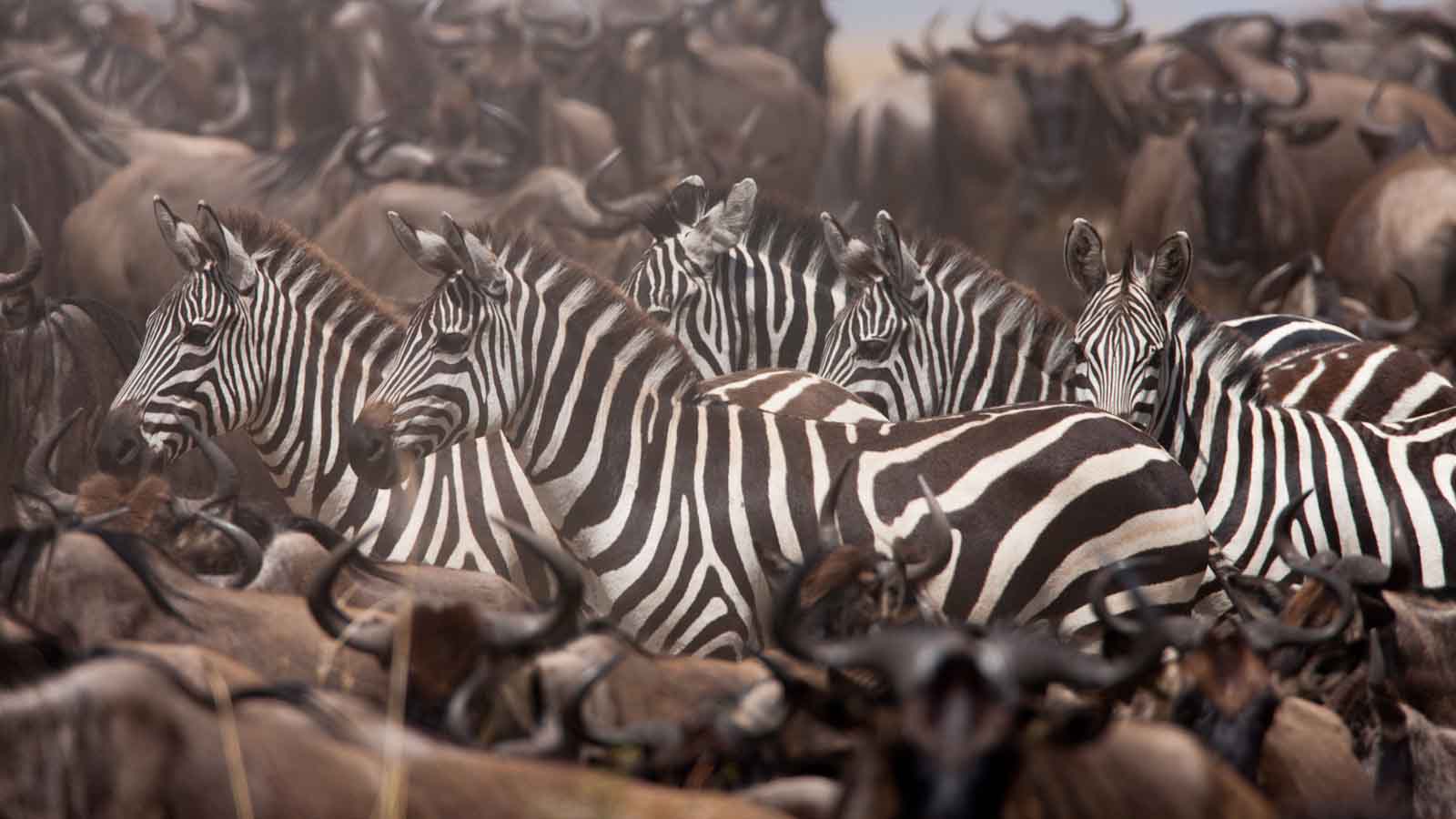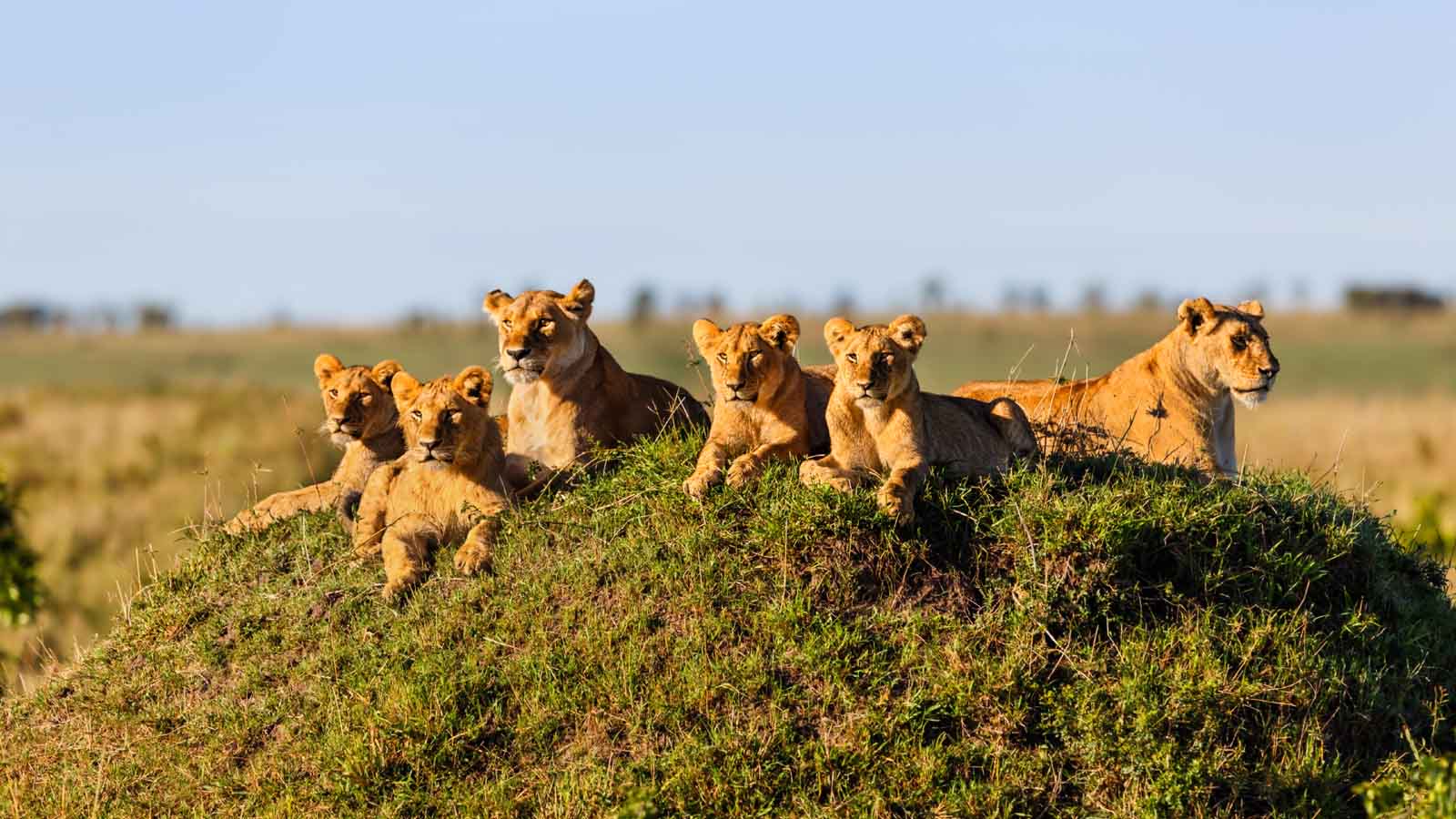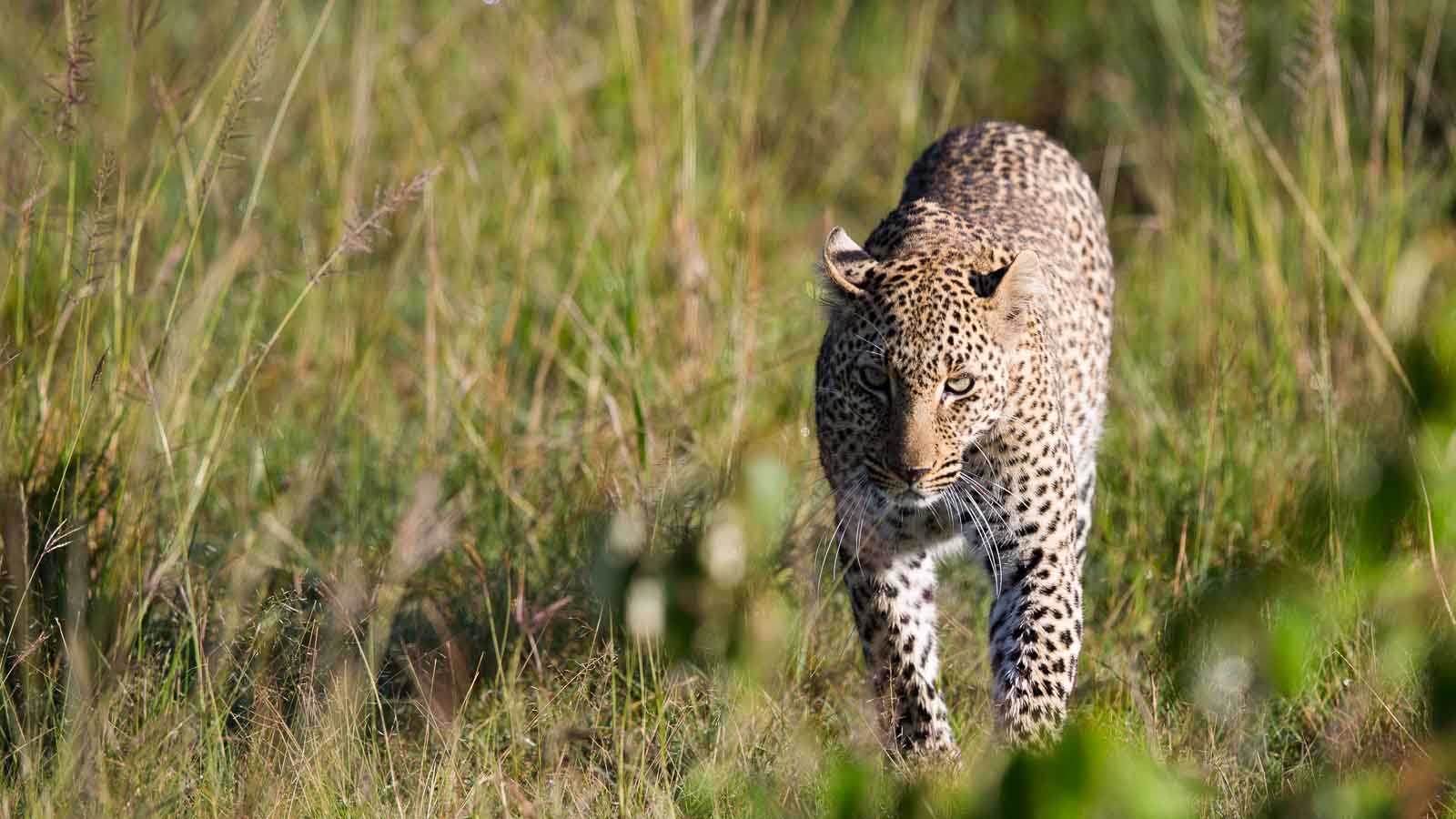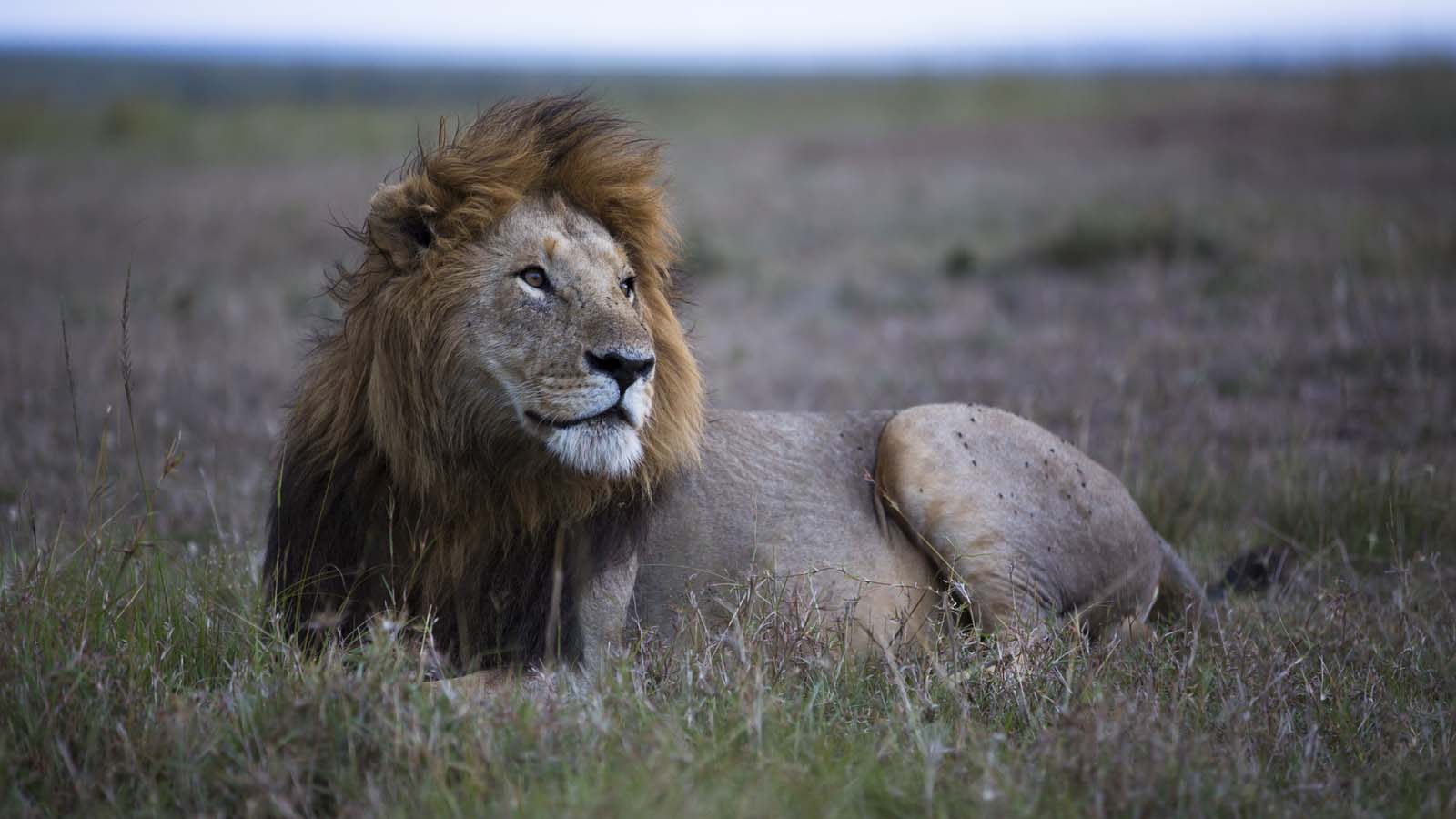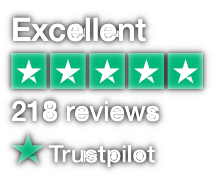Home to a stunning array and exceptional density of big game, Kenya's Masai Mara Reserve is justifiably one of Africa's most famous parks. The sheer quantity of wildlife on display during each game drive is outstanding. There are very few places on the continent that offer such good big five viewing and the Mara also hosts the Great Migration's immense herds towards the end of the year. Following the great migration from a hot air balloon, is an amazing way to take in the vastness of the Masai Mara's untamed wilderness and the incredible density of the wildlife on the plains.
It must be said that the Mara's reputation has a price: this is one of the busiest parks in Africa. Its proximity to Nairobi means it is very easily accessed, and as a result it is full of day-trippers and package tours and large hotels. It is not uncommon to have more than 10 vehicles around a pride of lion.
But like any sought-after tourist destination, you have to look beyond the crowds and see the essence of the park underneath. The Masai Mara is classic Africa; awe-inspiring endless plains, studded with the odd acacia tree, with a fantastic diversity and density of wildlife. This is the landscape that most people bring to mind when they think of Africa. The BBC's famous Big Cat Diary was filmed here, and as such, it has incredible big cats! In addition, between July and the end of October around twenty-five percent of the wildebeest herds embarking on the Great Migration pass through the area, in one of the world's most spectacular and impressive wildlife events.
The Great Wildebeest Migration
The Great Migration throughout most of the year makes its way around the
Serengeti National Park in Tanzania. Only between the months from July to October are the 2 million wildebeest and zebra herds creeping into Kenya’s Masai Mara. Although you can witness the river crossings on the Kenya side of the border, this is not happening the whole way through this four month period.
Some of the wildebeest head to
Kenya for further pastures as an extension of their main Serengeti route, and whilst there are daily crossings over the Mara River in Tanzania (from Kogatende to the Lamai Wedge, back and forth), catching a huge herd crossing the Mara River in Kenya can be more difficult as it is a smaller time frame the big herds are actually mulling around the Masai Mara area! For further explanation of how the herds cross from Kenya to Kenya and from Tanzania to Tanzania see our
Migration Map This should clear up the common misconception that the Mara River acts as a border between the two countries. For more information about Tanzania and the Great Migration, visit our
Tanzania page.
Masai Mara Safari - Where to stay
The Masai Mara has numerous accommodation options that it can be hard to know where to begin, however from over twenty years experience in the industry we know the Mara like the back of our hand.
For great value, look no further than the home of safari,
Governors Camp, or its little sister camp
Little Governors. Both offer excellent service and wildlife viewing without breaking the bank. The Governors camps are located close to where the BBC filed their
Big Cat Diaries so it is a popular choice. The Serena and Sopa often get mentioned, however they are like big hotels in the bush, so we recommend opting for a more authentic and intimate safari experience.
As with any safari, the sky is the limit in regard to luxury and price. The next step up is
Asilia's Rekero and
Serian's Nkorombo. Rekero is a no-frills camp, well respected for the quality of its guiding and hospitality. Serian ensures each party has a private vehicle for their game drives which makes it suit honeymooners and families respectively.
At the very high end of the scale is
Angama Mara. One of the most opulent and lavish lodges in the National Reserve, it is situated on the Western Escarpment. The stunning views across the plains are worth the price tag alone!
For a true all-round experience of the Mara's eco-system, we encourage guests to combine their time between the National Reserve and the surrounding conservancies that make up the
Greater Mara. This allows guests to experience the incredible density of wildlife in the National Reserve before enjoying the privacy, intimacy and other activities on offer in the conservancies.
For a summary of the
Best places to stay in the Masai Mara Reserve, please follow this link.
Masai Mara Activities – Hot-air Balloon safari
The Masai Mara is hugely dense with wildlife. It is a wonderful safari destination and has some incredible lodges to explore this iconic area of Kenya from. Because the wildlife is so fantastic, the main activity you should be doing here is the classic game drive, this will be more than exciting enough!
If you did want to push the boat out though, there are also hot air balloon safaris in the Masai Mara, which are particularly dramatic when the Great Wildebeest Migration are in the area from July through to the end of October (though this is not guaranteed!). The hot air balloon rides begin at dawn, and last around 45 minutes in the air, before coming back down and enjoying a champagne breakfast on the plains. Not bad! But for what is a 45 minute experience, the price per person is pretty costly at around $600 per head. We think sometimes money is better spent elsewhere on more premium accommodation options for an overall better quality safari experience.

